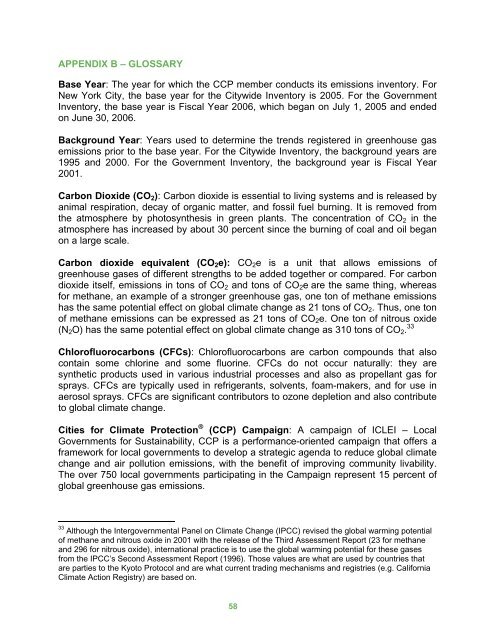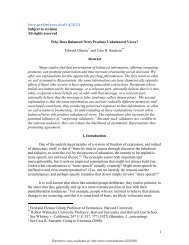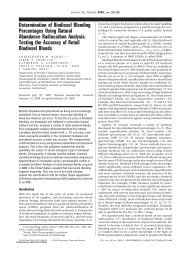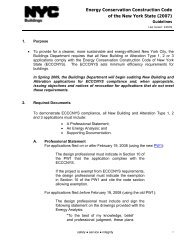GREENHOUSE GAS EMISSIONS - The Sallan Foundation
GREENHOUSE GAS EMISSIONS - The Sallan Foundation
GREENHOUSE GAS EMISSIONS - The Sallan Foundation
Create successful ePaper yourself
Turn your PDF publications into a flip-book with our unique Google optimized e-Paper software.
APPENDIX B – GLOSSARY<br />
Base Year: <strong>The</strong> year for which the CCP member conducts its emissions inventory. For<br />
New York City, the base year for the Citywide Inventory is 2005. For the Government<br />
Inventory, the base year is Fiscal Year 2006, which began on July 1, 2005 and ended<br />
on June 30, 2006.<br />
Background Year: Years used to determine the trends registered in greenhouse gas<br />
emissions prior to the base year. For the Citywide Inventory, the background years are<br />
1995 and 2000. For the Government Inventory, the background year is Fiscal Year<br />
2001.<br />
Carbon Dioxide (CO 2 ): Carbon dioxide is essential to living systems and is released by<br />
animal respiration, decay of organic matter, and fossil fuel burning. It is removed from<br />
the atmosphere by photosynthesis in green plants. <strong>The</strong> concentration of CO 2 in the<br />
atmosphere has increased by about 30 percent since the burning of coal and oil began<br />
on a large scale.<br />
Carbon dioxide equivalent (CO 2 e): CO 2 e is a unit that allows emissions of<br />
greenhouse gases of different strengths to be added together or compared. For carbon<br />
dioxide itself, emissions in tons of CO 2 and tons of CO 2 e are the same thing, whereas<br />
for methane, an example of a stronger greenhouse gas, one ton of methane emissions<br />
has the same potential effect on global climate change as 21 tons of CO 2 . Thus, one ton<br />
of methane emissions can be expressed as 21 tons of CO 2 e. One ton of nitrous oxide<br />
(N 2 O) has the same potential effect on global climate change as 310 tons of CO 2 . 33<br />
Chlorofluorocarbons (CFCs): Chlorofluorocarbons are carbon compounds that also<br />
contain some chlorine and some fluorine. CFCs do not occur naturally: they are<br />
synthetic products used in various industrial processes and also as propellant gas for<br />
sprays. CFCs are typically used in refrigerants, solvents, foam-makers, and for use in<br />
aerosol sprays. CFCs are significant contributors to ozone depletion and also contribute<br />
to global climate change.<br />
Cities for Climate Protection ® (CCP) Campaign: A campaign of ICLEI – Local<br />
Governments for Sustainability, CCP is a performance-oriented campaign that offers a<br />
framework for local governments to develop a strategic agenda to reduce global climate<br />
change and air pollution emissions, with the benefit of improving community livability.<br />
<strong>The</strong> over 750 local governments participating in the Campaign represent 15 percent of<br />
global greenhouse gas emissions.<br />
33 Although the Intergovernmental Panel on Climate Change (IPCC) revised the global warming potential<br />
of methane and nitrous oxide in 2001 with the release of the Third Assessment Report (23 for methane<br />
and 296 for nitrous oxide), international practice is to use the global warming potential for these gases<br />
from the IPCC’s Second Assessment Report (1996). Those values are what are used by countries that<br />
are parties to the Kyoto Protocol and are what current trading mechanisms and registries (e.g. California<br />
Climate Action Registry) are based on.<br />
58







